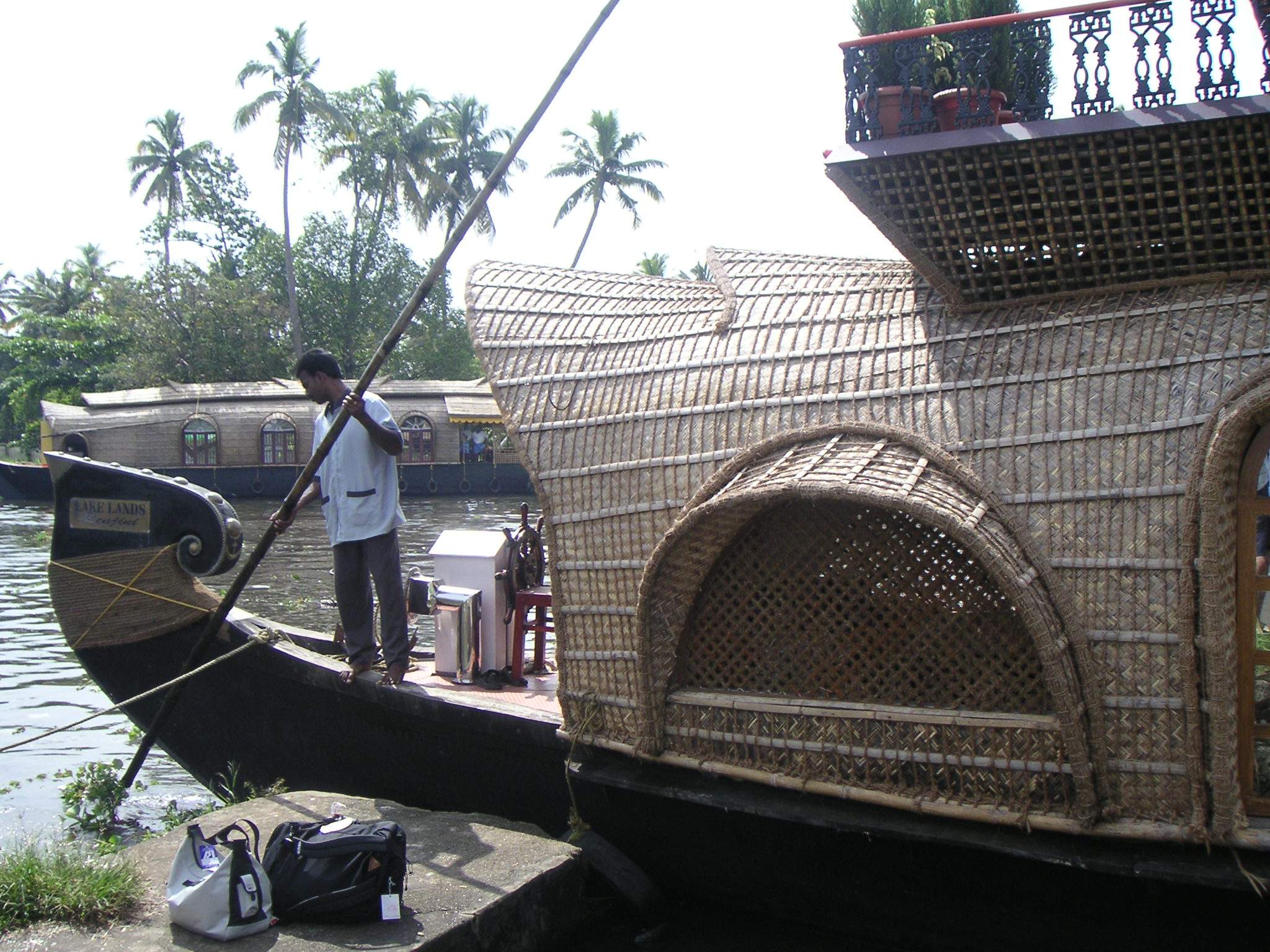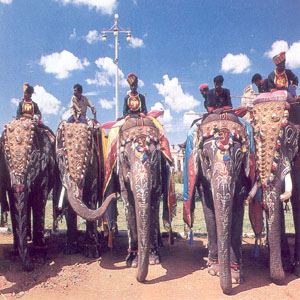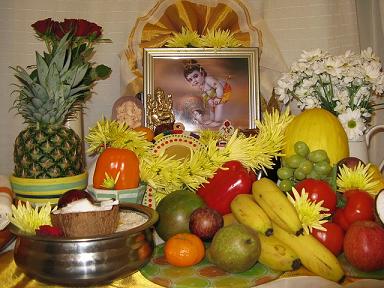 Laos has the pace of a snail, but for some, that is a very welcoming respite. DAVID LAVOIE writes.
Laos has the pace of a snail, but for some, that is a very welcoming respite. DAVID LAVOIE writes.IT’S the capital of the land of the laid-back. Vientiane, Laos’ major city, is what all of our cities were so many years ago. Although a town in size, it actually feels more like a village. There are few buildings taller than five stories; two or three is more common. Three cars in the same block is a traffic jam; four is grid-lock. Most transportation is by bicycle, small motorcycle, tuk-tuk
or slightly larger jumbos. In fact, many people simply walk everywhere.
Many of the buildings are French colonial in style and have ornate balconies. Here and there are more traditional Laotian buildings. It all has a tremendous elegance. The sidewalks are clean and largely empty. Everywhere tiny shops sell the beautiful fabrics produced by women in rural villages using traditional patterns. The cloths are hand-woven on ancient wooden looms.
The people are very friendly and soft-spoken. It is very offensive to a Laotian to shout, or raise your voice, or complain loudly or generally make a scene. They are culturally a very gentle people, just one of the many paradoxes of this country which has in the past been so torn by war. Laotians are Buddhists, a religion which emphasises the cooling of human emotions; strong emotions are taboo.
The French say that the Vietnamese plant rice, Cambodians watch it grow and Laotians listen to it grow. It’s a wry, but astute, observation. It’s not that Laotians avoid work, far from it, but rather that they shun stress. In fact, they feel sorry for people who live for their work since it is, they believe, “bad for your brain”.
It’s a relief to say that Laotians have so far resisted franchises. Nowhere will you find Starbucks, MacDonald’s, KFC, Hilton and other chain hotels, or anything resembling a trendy shop, or a supermarket. You buy your clothes from the tailor or seamstress who makes them, you frequent shophouses and small cafés where you make do with delicious croissants, brioche, baguettes and dark, aromatic, wonderful Laotian coffee.

Laotians have inherited from the French a taste for really good food. Laotian cuisine tends to be very spicy even when it is toned down for western tastes but in Vientiane, one finds all sorts of restaurants: French, Thai, Italian, Korean, Chinese, Indian, Malaysian, and even a Scandinavian bakery! And everything is as it was a half century ago at home. It’s quite wonderful.
A stroll in Vientiane inevitably leads you to the huge “Morning Market”, its name a bit of a mystery since it seems to run 20 hours a day. Everything under the sun is for sale there, and much of it is rather shoddy, except for the traditional handwoven cloths.
Near the market is the Patuxai, which the Laotians think of as their “Arc de Triomphe.” It is constructed from cement paid for by the Americans who wanted the Laotians to use it to build an airport. Expatriate residents in Vientiane fondly call it “The Vertical Runway”. A sign on the Patuxai provides an excellent insight into Laotian honesty. “From a close distance”, the sign reads, “it appears even less impressive, like a monster of concrete”.
There are some terrific views from the top of the arch giving a very clear idea of the layout and nature of the city. Most amazing is to see the four lane avenue running from the arch to the presidential palace which, by our standards, is empty. There are simply relatively few cars in Vientiane.

Strolling about is easy. Even the tuk-tuk drivers hustling visitors are polite and low-key. Closer to the river, the number of shops selling handicrafts, much of which one can find much cheaper at the Morning Market, increases. So do the cafés and restaurants.
Some opportunities for exploring outside the town exist. One trip is to the “Buddha Park”. Dozens of cement Buddhas and other figures from Hindu and Buddhist mythology crowd a small park some 40 kilometres from Vientiane. Along the road one sees the full panoply of rural life; rice paddies, water buffalo, goats, naked dusty children, women in coolie hats, and some beautiful old colonial homes among the simpler rustic dwellings.
A visit to the National Museum in Vientiane starts out as expected with a number of exhibits showing archeological finds from prehistory, but as the visitor walks from room to room the artefacts change in character. Gone are the potsherds; now on display are almost exclusively rifles and other weapons. There are more and more photographs of the struggles of Laotians against various foreign forces, French, North Vietnamese and Americans.
It is a sobering reminder of recent Laotian history. Although the US never declared war on Laos, between 1964 and 1973, in an attempt to shut down the dangerous Hi Chi Minh Trail being used by the North Vietnamese, the US dumped on the Laotian countryside an average of one planeload of bombs every eight minutes, 24 hours a day for the whole nine years. UXOs (unexploded ordinance) continue to take many lives and limbs each year in Laos.
But the museum is largely empty. Too much sorrow is “bad for your brain”.
Luang PrabangLuang Prabang is a jewel. Its old colonial-style buildings and shophouses rarely exceed two stories. So far, 700 of the town’s buildings have been classified by a Unesco team as historic. In the narrow streets and lanes, cars are few. There is no street lighting. At its busiest, it is still very quiet.
After a day in Luang Prabang, even laid-back Vientiane seems like a pressure cooker. Wats, Buddhist temples, are everywhere and the sight of monks, many of them just boys, is common. Hmoung, Mien and Thai tribal people stroll about the streets, or sit beside the river under coconut palms. In one shop an industrious silversmith carefully engraves a delicate silver bowl; in another, an artisan carves a wooden roof brace for a traditional house reminding the visitor that Laos is still very low-tech. Coffee beans and wheat wafers, for instance, are naturally dried on racks on the sun. Tea leaves are processed in very simple conditions by women over wood-heated hot tables.

When the peace of Luang Prabang gets to be too much, one can spend a day kayaking. The trip down the Nam Khan river offers many tantalising glimpses of the life of rural people. Closer to the city are sacred caves and small villages which can be visited, or the really energetic can learn to ride and care for an elephant at a nearby Eco-lodge.
In town, however, there is little to do apart from eating in one of the many excellent restaurants, climbing Phu Si, the hill in the centre of town, or visiting one of the town’s 66 temples. The Royal Palace, now a museum, contains some attractive displays and gives a real taste of traditional Laotian elegance. Local people believe that the palace is haunted by the tragic spirits of the last royal family forced into captivity, starved and abused by the Pathet Lao. None will enter the palace at night.
After dark, the liveliest part of town is the large night market, a riot of colour operated mostly by ethnically-dressed women. The shopping is wonderful. By 10 o’clock, the whole town is asleep.
The restaurants are shut down, there is no traffic, and the sole illumination comes from the quiet houses. The only noise in the night is the deep subdued sound of the huge wooden drums summoning the monks to prayer. Otherwise, the town is dark and quiet.
Morning, however, comes early. One of the experiences one must do is rise early in the morning to see the processions of begging monks between six and seven. The sticky rice which the monks collect along the way is their main food for the whole day. Some 300 monks in long silent columns move slowly past rows of kneeling people, many of them women.
Each person places a pinch of sticky rice in the brass bowl of each monk; this way the bowls slowly fill. The people kneel because it is disrespectful to have one’s head higher than a monk’s even though he may be a little boy and you a senior citizen. There is little sound except the shuffling of sandaled feet and the deep reverberations of the occasional temple gong. The air is filled with the sweet smell of wood smoke from simple braziers preparing the rice.
In a journal published in 1909, the French wife of a colonial doctor, Marthe Bassene, wrote: “Oh! What a delightful paradise of idleness this country protects, by the fierce barrier of the stream, against progress and ambition for which it has no need! Will Luang Prabang be, in our century of exact sciences, of quick profits, of victory by money, the refuge of the last dreamers, the last lovers, the last troubadours?”
If only Marthe could know how much of her beloved Luang Prabang remains.
But for how long now? The new world is knocking at the door and the change she feared has arrived. Still simple, low-key and not quite ready yet for well-heeled tourists, the old Laos is, nevertheless, on the cusp of disappearing. How many more years will the country be as it still is?
source:http://www.nst.com.my/Current_News/NST/Saturday/Features/20080215172844/Article/indexF_html









































